Caravan Water Systems
Hot and cold running water is something we take for granted in a caravan – until, perhaps, something goes wrong. Here we look at the technology behind the tap and advise you on how to get the best from your caravan water system.
In this practical guide to caravan water sytems, technical writer Terry Owen delves into the systems that take water from the container to the tap and traces caravan water systems back down the years. "One of the problems of using pressure switches with submersible pumps is that the delivery pressure if very dependent on battery voltage," he says.
Essentially, a caravan's water system can be split into three basic functions - pumping, switching the pump and heating the water.
Caravan water pumps
Most of us are familiar with the submersible pumps that sit inside an external water container, such as an Aquaroll (available at Halfords, Millets and Argos) and pump the water on board. They use a small 12-volt motor to drive an impellor at high speed, forcing the water through the delivery pipe and into the caravan.
Being submerged, these pumps do not need priming (filling with water first) and most are self-venting, so any air trapped inside can escape through a hole in the top. If not, then shaking the submerged pump for a few seconds can help.
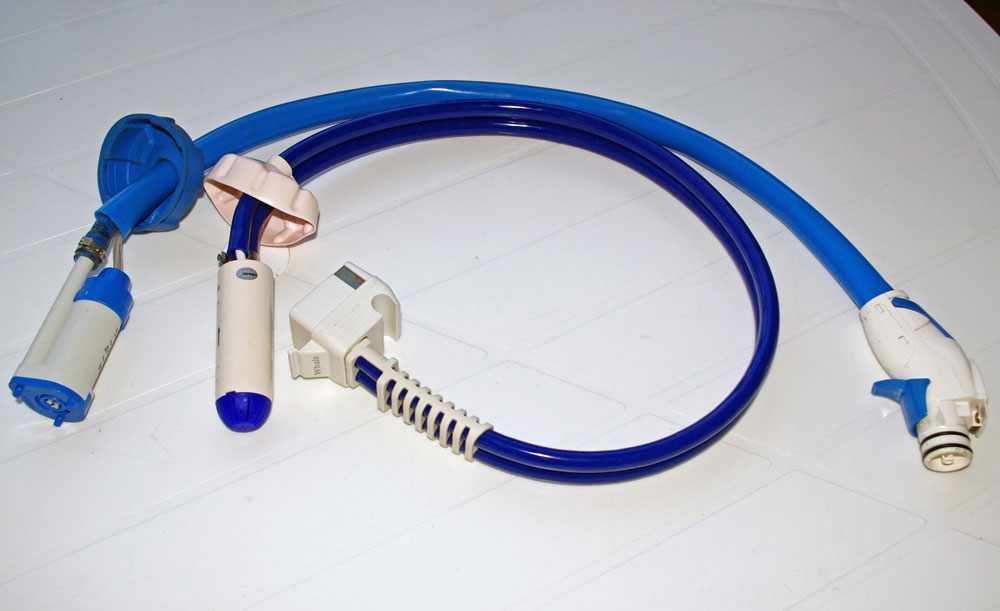
Submersible pumps from Truma and Whale
Submersible pumps use water to lubricate the impellor bearing, which is why it's important not to let them run dry for more than a minute or so. They are simple, reliable and relatively cheap and, for these reasons, have dominated the touring caravan market for many years.
Before submersible pumps became popular, you had to move water by manually-operated, self-priming pumps. The manual pumps used the suction to lift the water and manufacturers put them inside the caravan.
Buying Your Perfect Caravan, the 2024 special edition is available now. Including everything you need to know about buying your first caravan, with essential guides, top tips and buying advice. Available in both digital and print. Find out more about either the digital edition here or the Print edition here.
Perhaps the most famous of them is the Whale Tiptoe pump. The pump sat in the floor of the caravan and you operated it by foot. When finished, the mushroom-shaped plunger locked down flush to the floor with a twist.
The design was so successful that it's still available today, although you're now more likely to see it in a boat than a caravan.
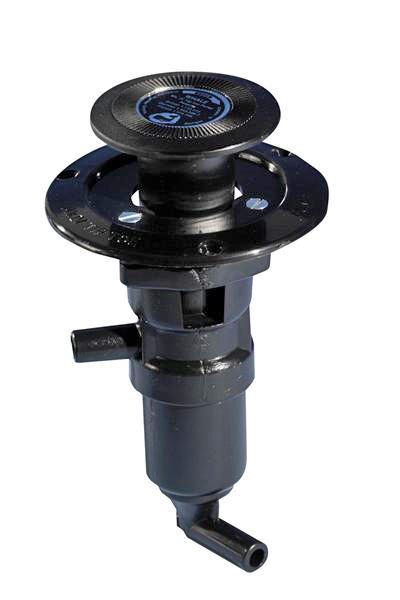
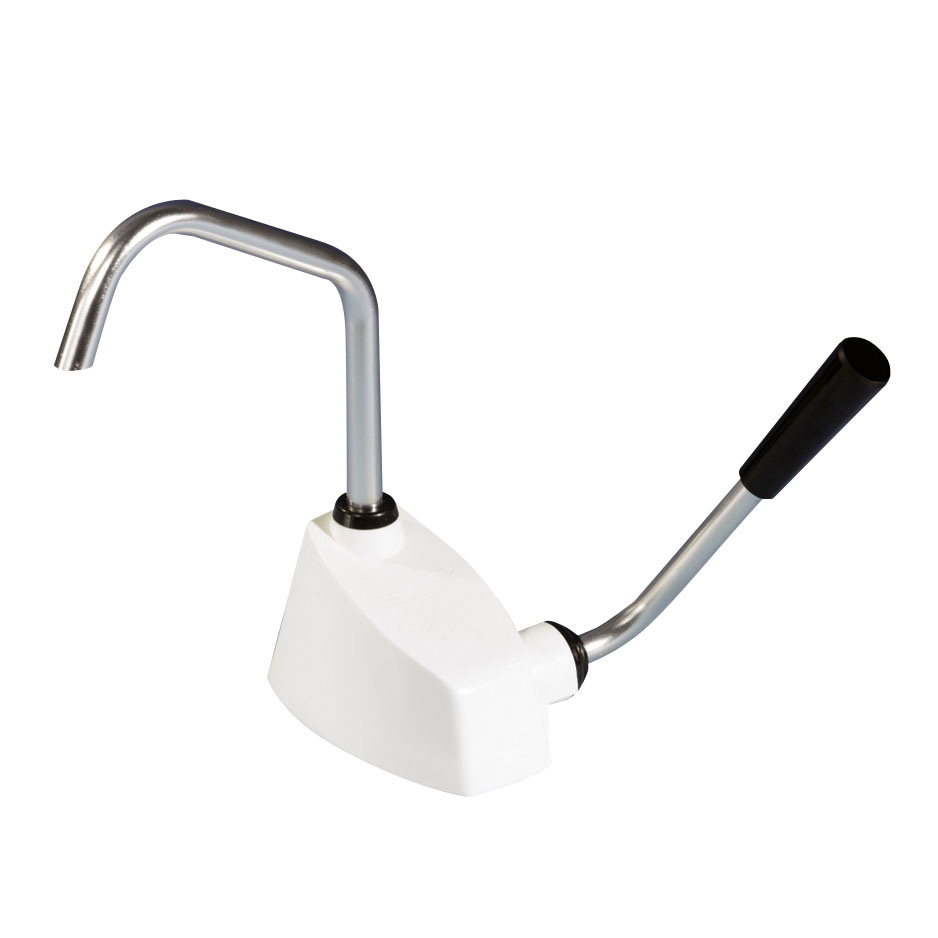
Whale's Tiptoe and Flipper pumps were common 30 years ago but are now more likely to be found on boats
Another form of 'self-priming pump' has gained adoption in modern caravans. This is the electrically-driven diaphragm pump. Not only can these suck water up an empty pipe, they can also run dry for extended periods without damage.
The pump consists of three or four chambers, each with its own inlet and outlet valves. A large rubber diaphragm pulses across the chambers sucking water into each one and then expelling it.
The water cannot run back through the pump as the valves prevent it so this type of pump can deliver good pressures at low flow rates.
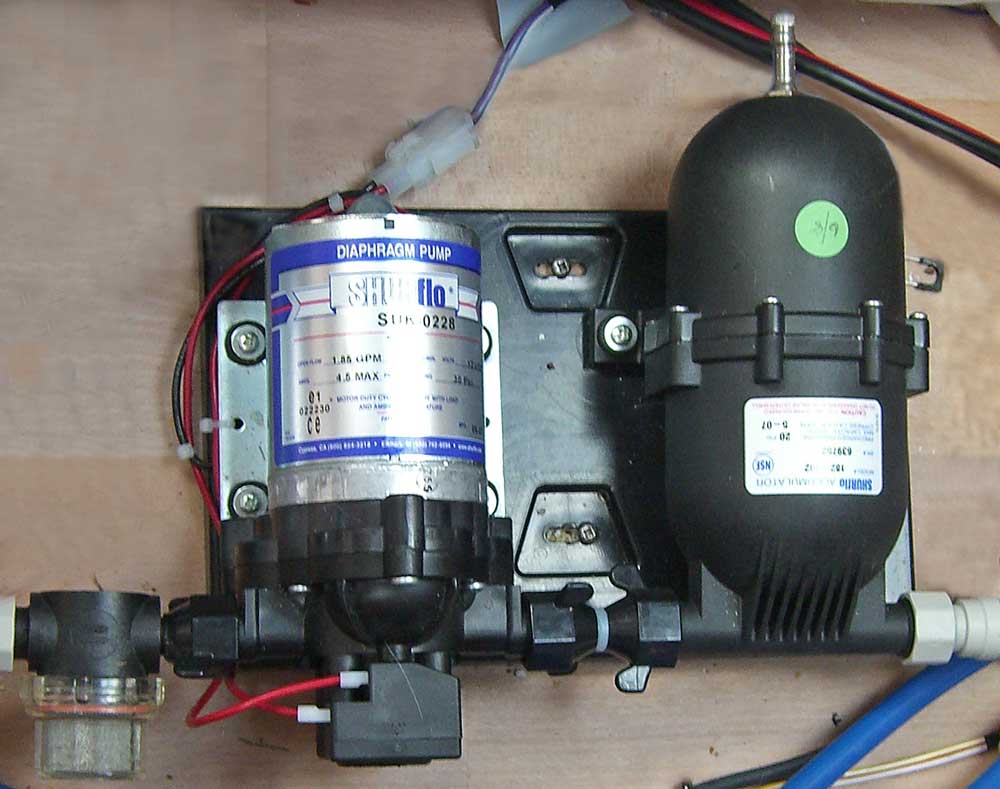
The Shurflo pump; fitted by Swift at one time
Several companies make electrically-driven diaphragm pumps for caravans. One of the most common in the UK is the Flojet, supplied by Truma. Swift Group fits them in a variety of their caravans.
Another is the Shurflo. Swift used to fit this make before switching to Flojet. Whale also makes diaphragm pumps.
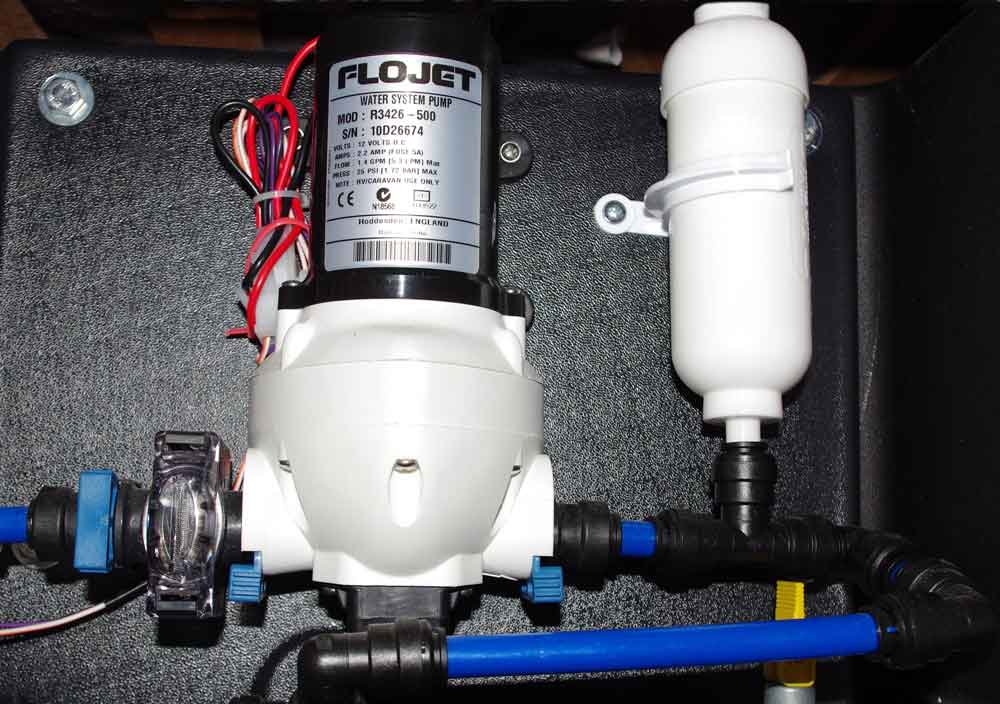
A Flojet diaphragm pump and damper as supplied by Truma
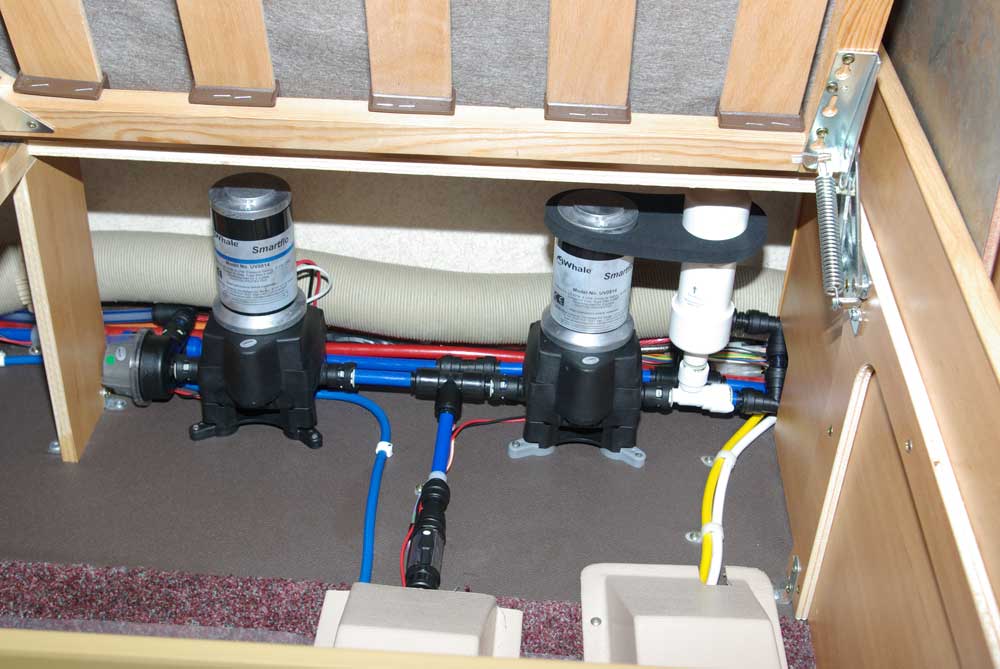
Whale also makes diaphragm pumps
Get Caravan magazine from just £19.99

Caravan magazine has been inspiring caravanners for more than 80 years! Every monthly issue is packed with caravan travel inspiration, the best sites to stay on, caravan road tests, reviews and buying guides, plus top technical advice.
Caravan’s fully searchable digital library gives you access to the latest issues, plus every edition of Caravan since February 2013.
Switching the pump
You can switch pumps on and off in one of two ways, both of which have increased and decreased in popularity over the years.
The simplest solution is to build switches into each tap. Of necessity, the switches need to be small and so the makers use microswitches. In time the constant switching of the pump current (2-4 amps) can cause microswitches to fail. If this happens, a workaround is to go to another tap and turn it on just enough for its microswitch to operate.
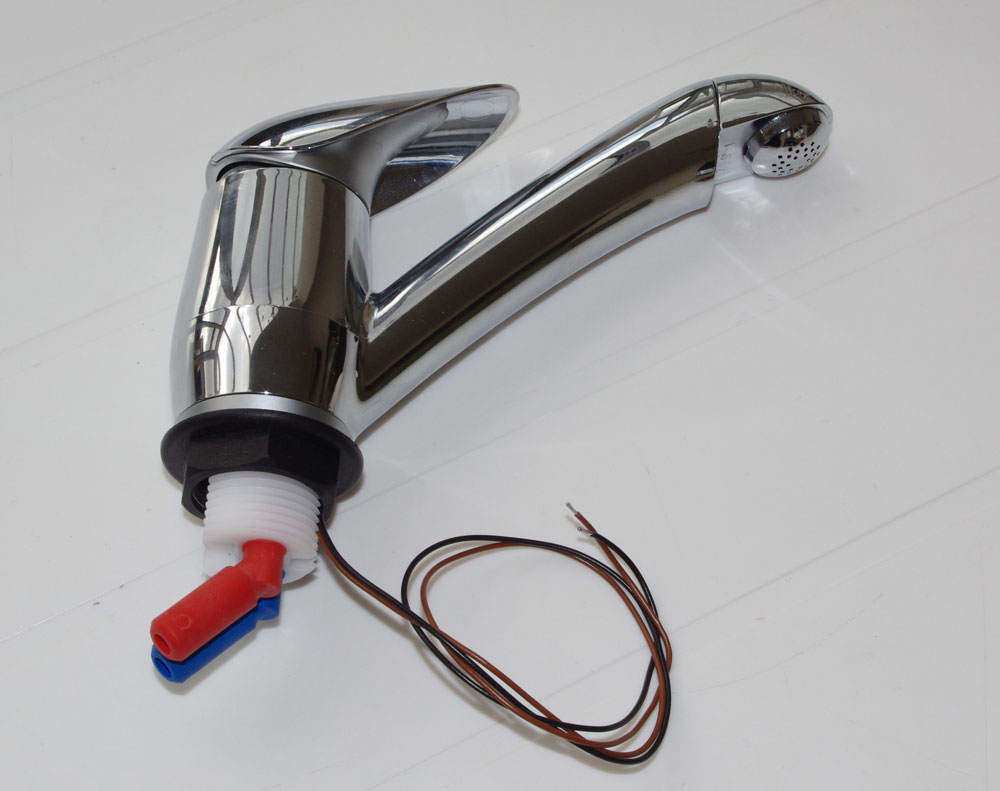
The other method of pump control is to use pressure switching. In the case of a submersible pump, you will find a pressure switch just inside the caravan or within the water inlet socket. As the pressure rises when you turn a tap off, the switch operates, turning the pump off. The system then holds the pressure between the closed tap and the pressure switch, which acts as a non-return valve.
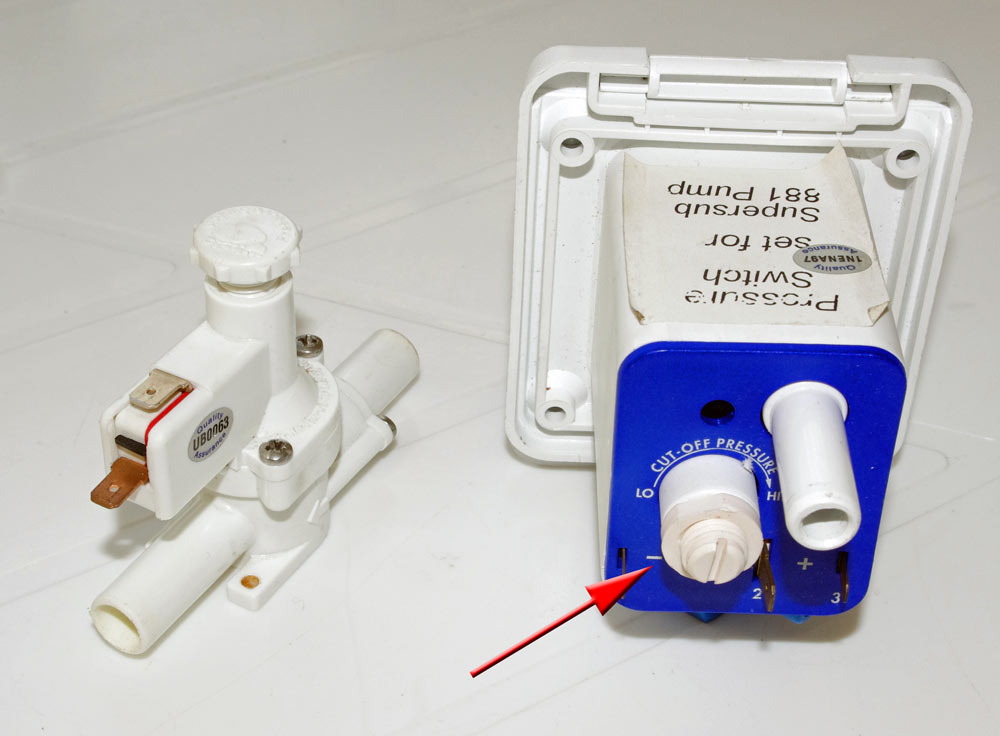
Since water is non-compressible, you may be wondering how pressure switching can work. The answer lies in having some air in the system that can absorb and store the pressure. A pump most commonly achieves this using a small. This works a bit like an upside-down bottle with its neck connected to the delivery side of the pump. As the pressure increases, the pump forces water into the vessel, compressing the air above it.
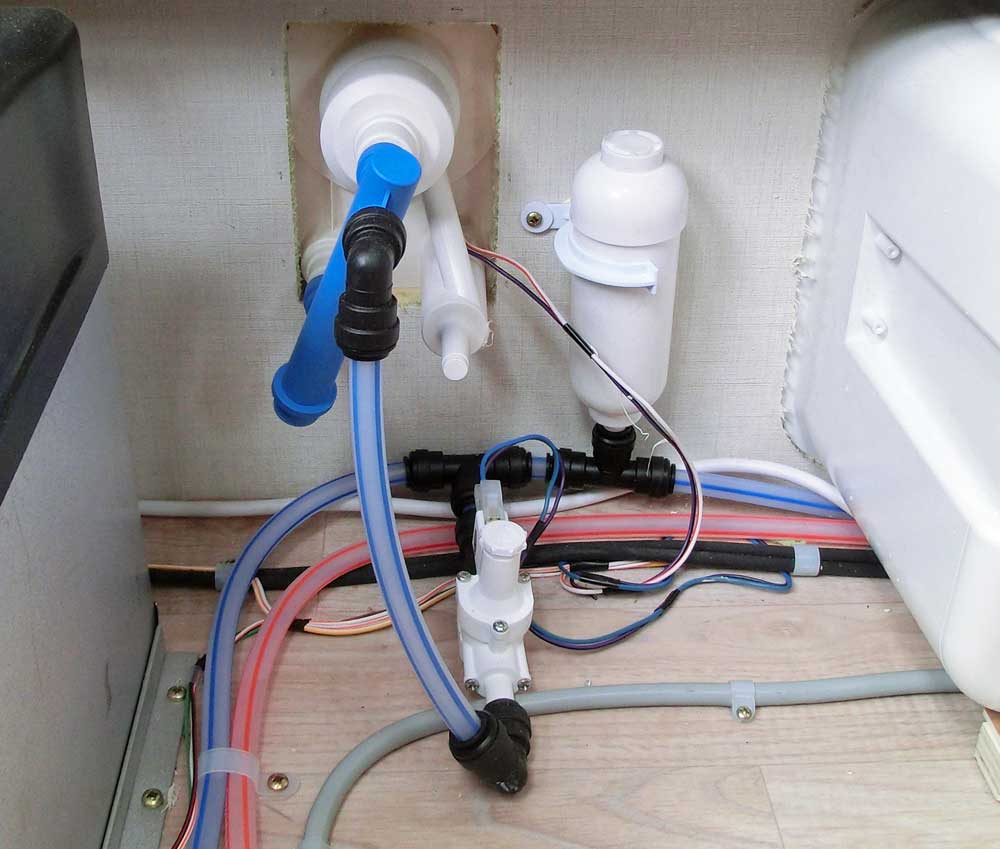
A Whale pressure switch and damper installed in a 2017 Lunar Clubman
When used in conjunction with a diaphragm pump, the pressure accumulator also has the beneficial effect of smoothing out the pressure surges from the individual chambers within the pump. This gives rise to its more common name - that of a 'surge damper'.
One of the problems of using pressure switches with submersible pumps is that the delivery pressure is very dependent on the battery voltage. If you're off-grid, this can slowly decay to the point where you have to adjust the pressure switch. To eliminate this potential issue Whale and Truma each developed intelligent pressure switches that effectively do the adjustment for you (see panel).
Diaphragm pumps are much less susceptible to pressure variations with voltage. For this reason, it is quite common for a pressure switch to be built into the pump as the preferred means of switching.
Water heaters for caravans
Water heaters for touring caravans are dual-fuel with a capability of using mains electricity or LPG or, quite often, both at once for faster heating.
There are two types; ones that just heat water, and combined units that also provide space heating.
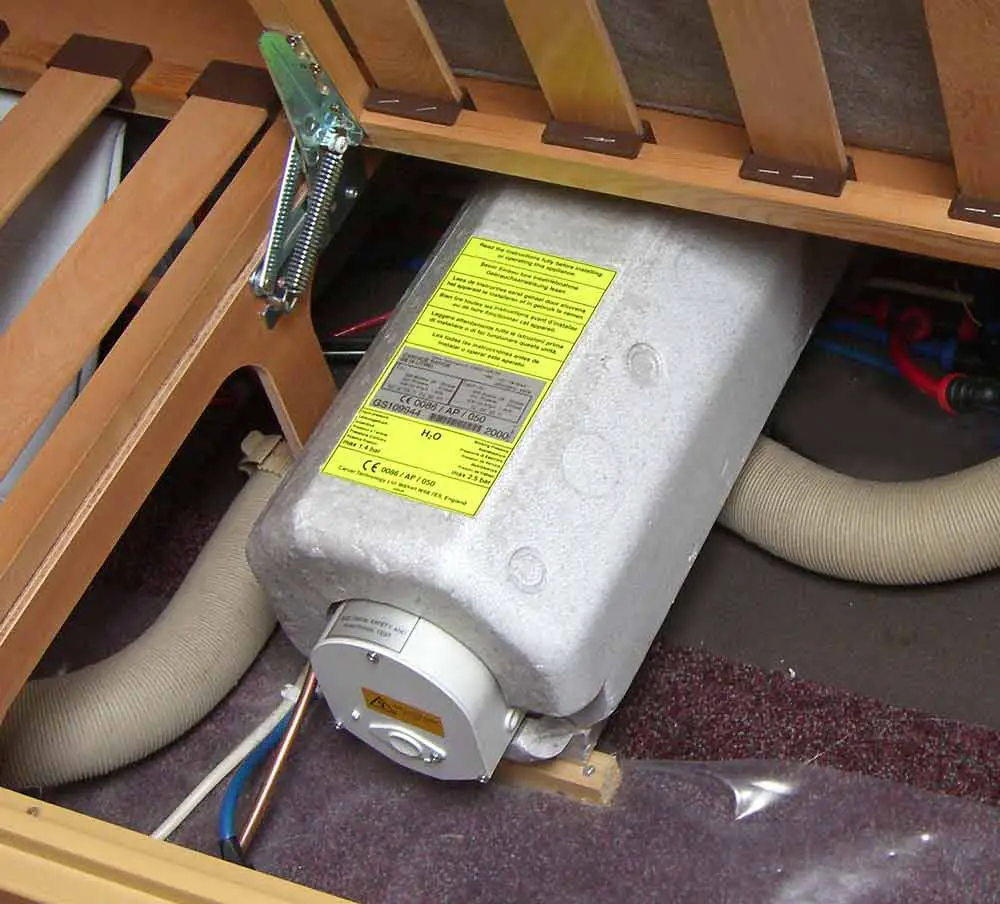
Carver's Cascade water heater
One of the early water heaters was the Carver Cascade. The company made hundreds of thousands and many survive to this day. Production ceased in 2000 when Truma bought the rights to Carver's water and heating products.
Truma's Ultrastore water heater replaced the Cascade, which itself had been around for some years. You will find the Ultrastore on many UK caravans made between 2001 up to 2013. Although still in production, it has now been largely superseded by Truma's Combi heater, which also provides ‘space heating’.
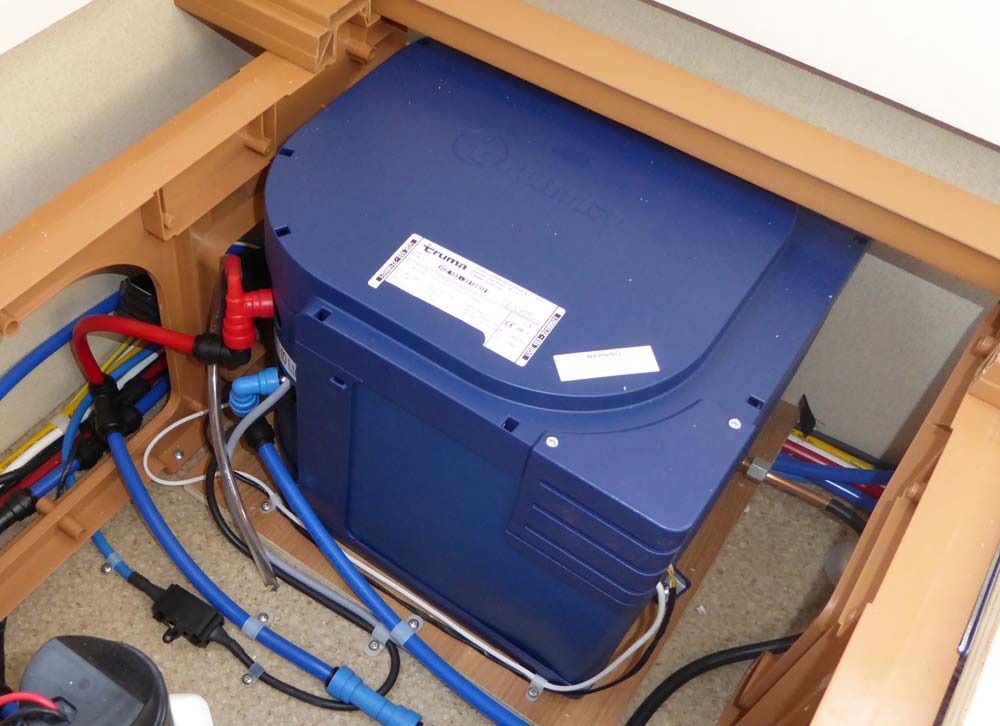
Truma's Ultrastore water heater
Most Ultrastore heaters have a water capacity of 10 litres, although a 14-litre version is available. Early models had an element of just 450 watts and took 70 minutes to heat up on electricity only. Over the years Truma upped the power in stages. It now comes with a switchable 850/1300 watt element, reducing the time to 29 minutes, or just 16 minutes if you use gas too.
Whale entered the water heater market in 2009 with an upgraded version of the Propex Malaga water heater, to which it had bought the rights. With an electric element switchable between 600 and 1200 watts and a 13-litre food grade tank, the heater set new standards for performance and efficiency.
The eight-litre version followed in 2011 fitted with an electric element switchable between 750 and 1500 watts. Known as the 'Rapid heat', it can heat water from 15 to 70 degrees in just 12 minutes using gas and electricity.
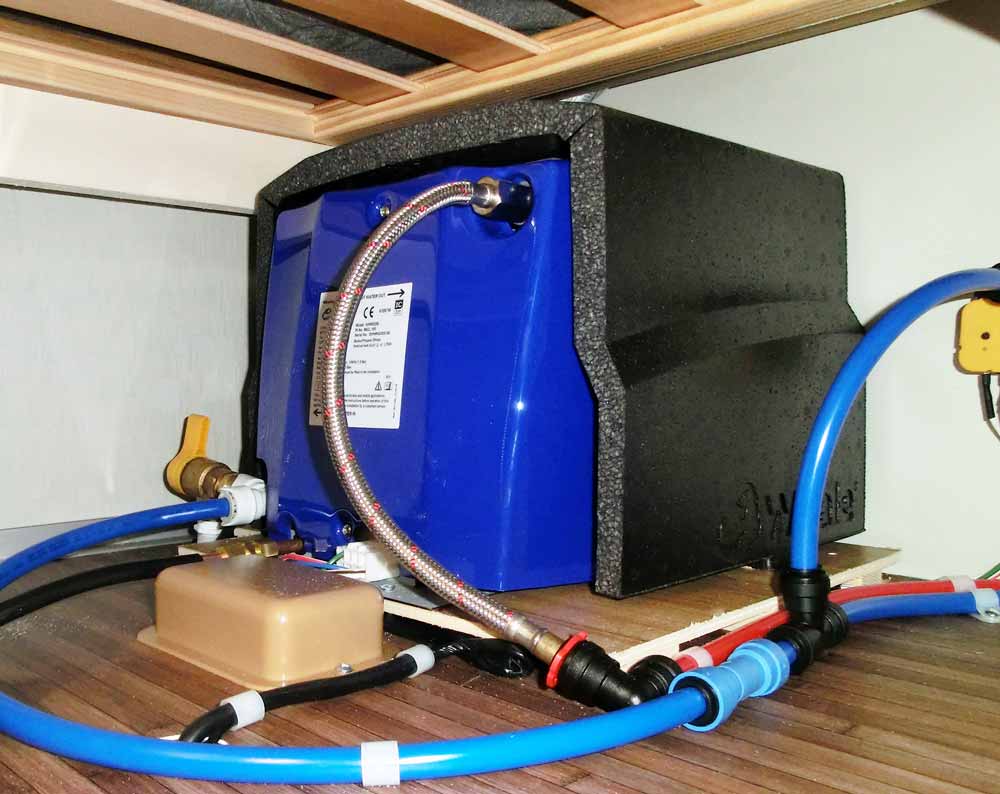
Whale's eight litre Rapid Heater
Whale's innovation continued in 2014 with the launch of the industry's first-ever under-floor water heater, the Expanse. It can deliver enough hot water for a 14-litre shower in 11 minutes and then reheat sufficient for a second shower in eight minutes. A high level of thermal insulation keeps the water hot for extended periods.
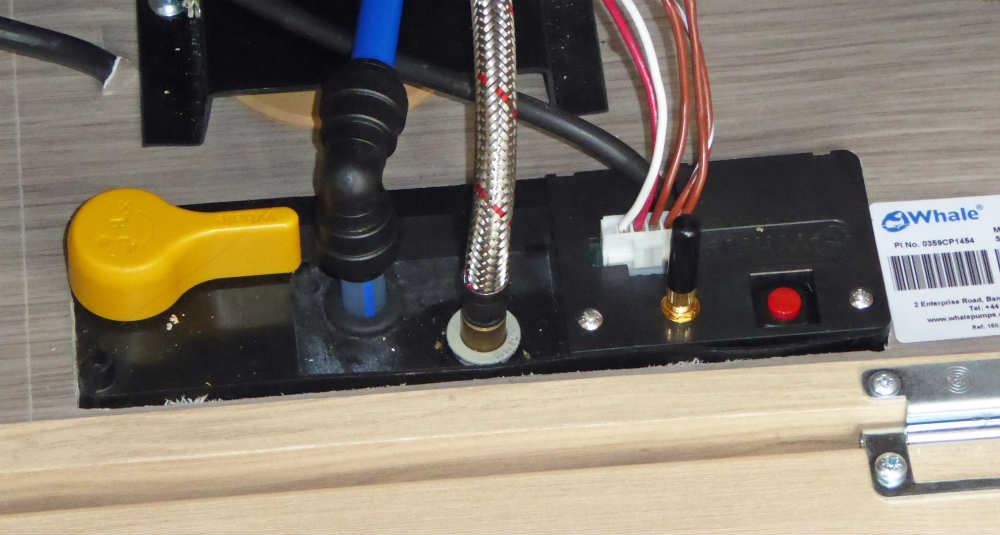
There's not much to see with Whale's Expanse underfloor heater
Combined water and space heaters for caravans
The first to market with a combined water and space heater for touring use was Alde, as long ago as 1966. The unit used antifreeze to heat both water and radiators and became renowned for its efficiency.
Today, Alde's boilers use the same principle and are at the forefront of efficient design. They have mushroomed in popularity over the last few years.
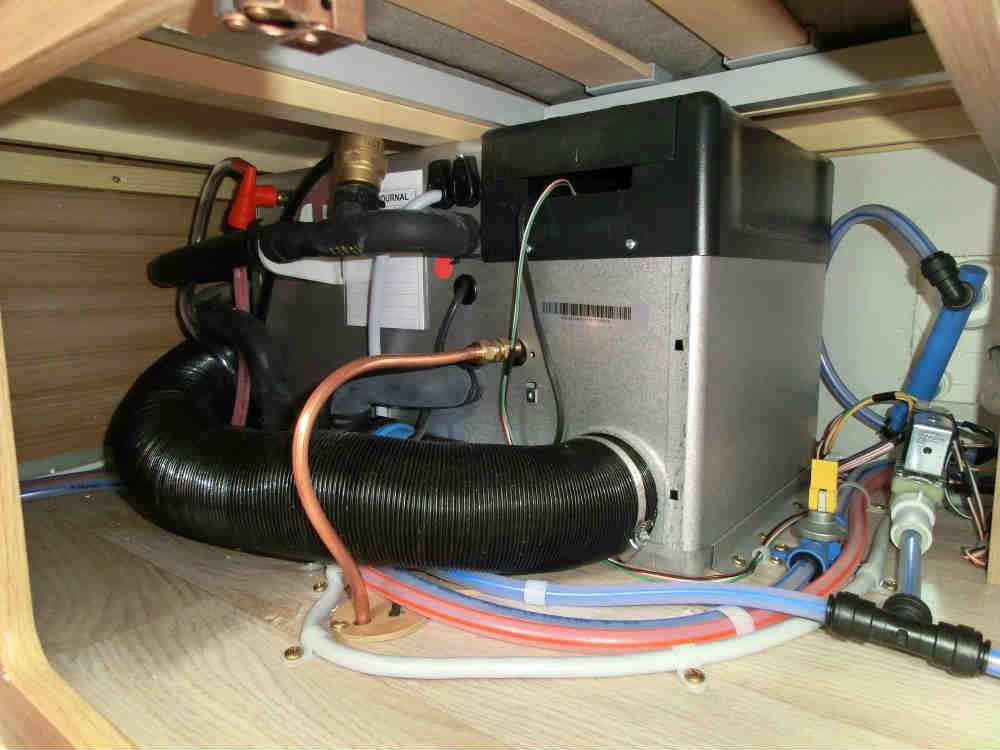
Alde's Compact boiler and flue
Alde's water tank has a capacity of eight litres and can heat very quickly under either electric or gas power. For those who want the ultimate in luxury, there is an attachment called the 'Flow' that can provide continuous showering, minimising warm-up time.
In 1994 Truma introduced its first combi boiler. It provided blown air heating and hot water from a single device but its size, weight and cost made it more suitable for motorhomes than touring caravans.
For the 2012 model year, Coachman chose a more modern unit, the Truma Combi 4E, for their Amara, Pastiche and VIP ranges. It was the first time a company had specified a Truma Combi unit for a UK-built caravan. Since then, the cost and weight savings of having a single unit over two separate ones means Bailey, Lunar and Swift fit the Combi fitted to their touring caravans.
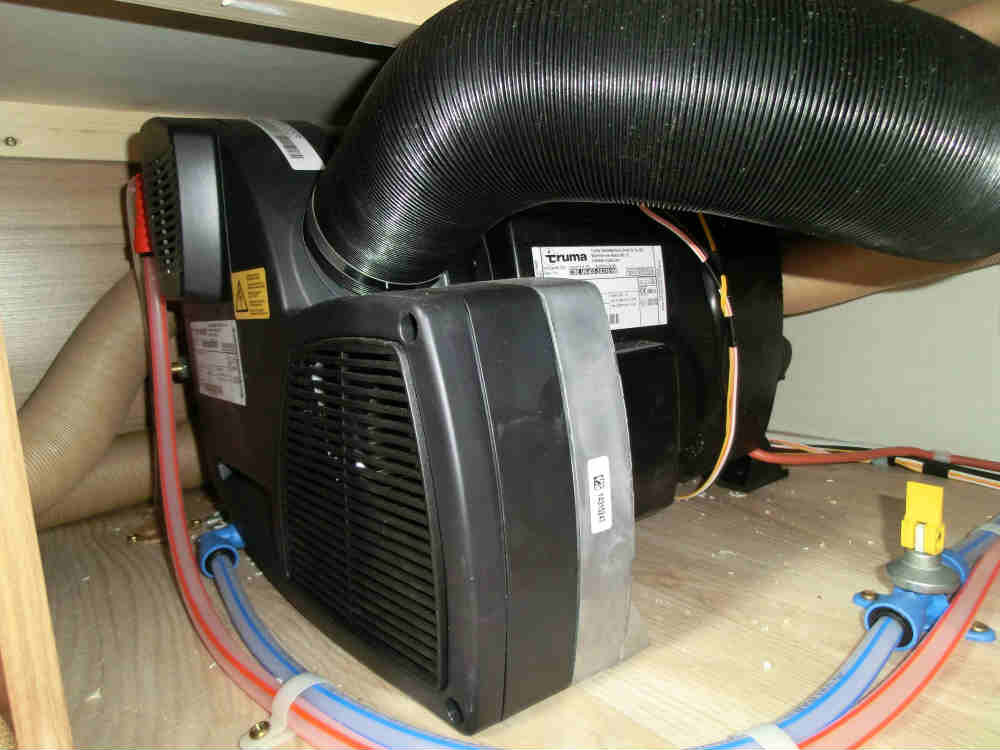
Truma's Combi boiler and flue
All Truma Combi heaters have a water tank capacity of 10 litres. Warm air heats the tank so it can take a while to get hot, especially if you operate the space heating at the same time.
Common water systems for caravans
Note: For simplicity winter drain valves we have omitted from these drawings.
Single submersible pump
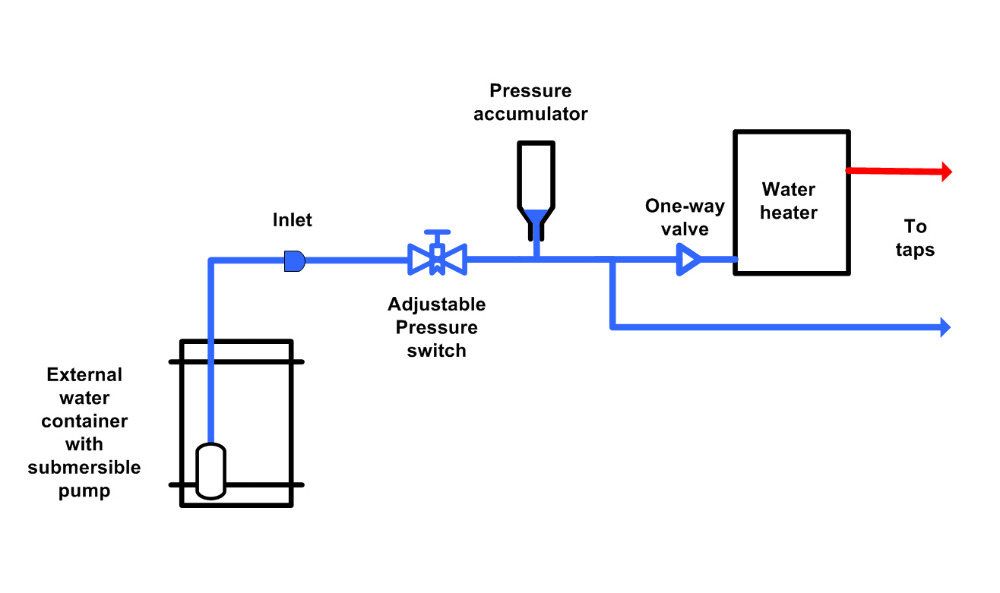
Here is a simple pressure-switched system using a submersible pump. The pressure switch acts as a one-way valve keeping the pressure in the system when the pump switches off. The other one-way valve prevents warm water from the heater getting into the cold supply. This arrangement can be found on many Lunar caravans.
Microswitched systems dispense with the pressure switch and accumulators. A one-way valve can stop water draining back into the container.
Diaphragm pump
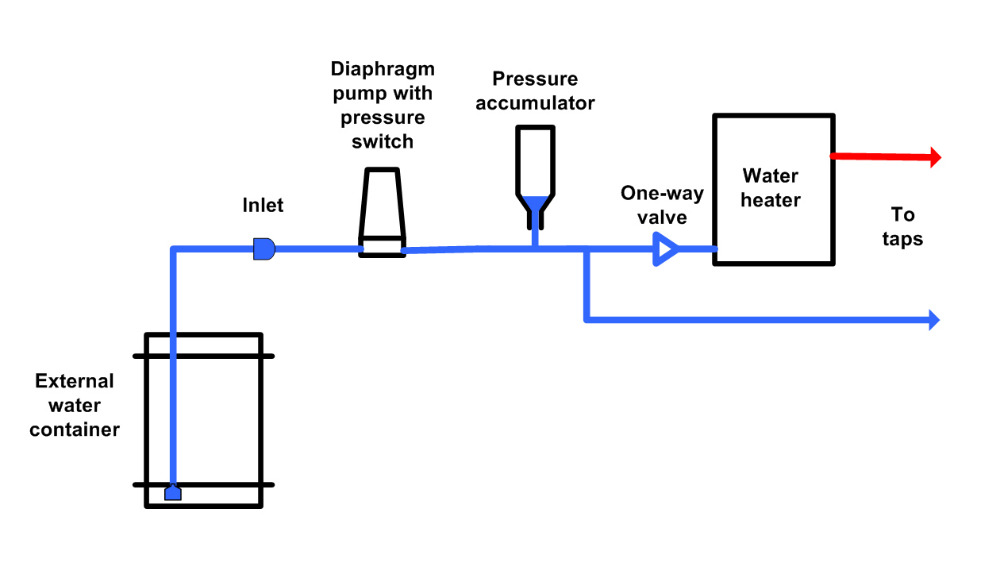
Diaphragm pumps act as their own one-way valves and often contain a pressure switch. This arrangement can be found on many Swift Group caravans.
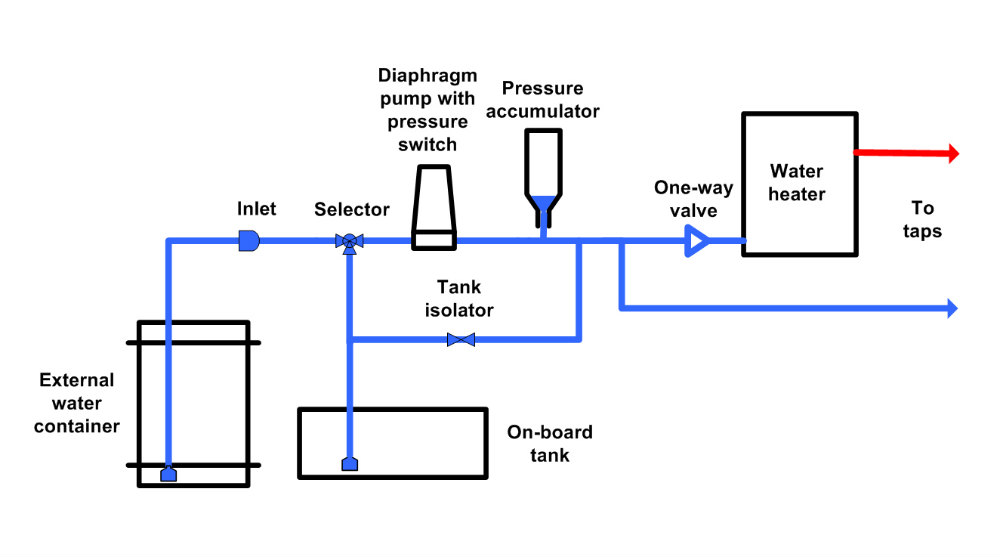
With fitted on-board tanks, water systems can become quite complex. This is one of the simpler arrangements. The selector chooses between the two water sources, the isolator opens to fill the on-board the tank. The downside is that you have to manually operate the valves to fill and then use the on-board tank.
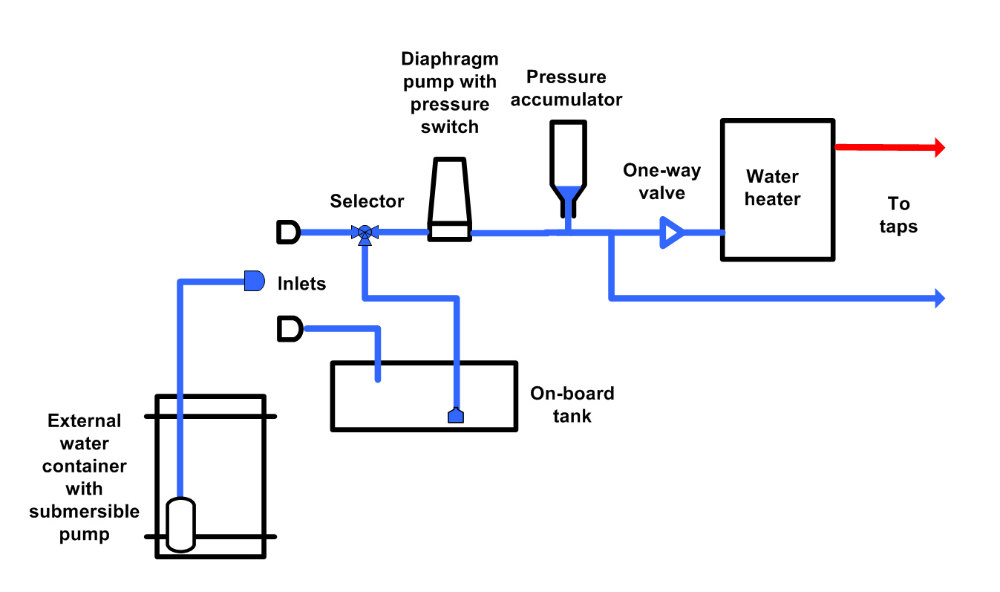
This ‘two pump, twin inlet socket’ arrangement is very user-friendly. You will find it on Swift Group caravans from 2011 where they fitted an on-board tank. The tank can be easily topped up by switching the external pump on and off.
Intelligent pressure switches
These clever pieces of electronics do away with the need to adjust the pressure switch on systems powered by submersible pumps. If you have such a caravan and only ever use it with a mains hook-up, this may not be an issue, but these devices have another trick up their sleeves. They know when the pump has run dry and will switch it off.
Whale Watermaster IC (Intelligent Controller)
Whale's version works by monitoring the water pressure and the electric current taken by the pump. It stops the pump when all the taps have been turned off and also when it runs dry. It can do this with a supply voltage varying all the way from 10 to 15 volts.
The software within the device recognises exactly what the pump is doing at any one time. As the people at Whale also make the pumps they can do this very accurately. Even so, there can be slight differences between individual pumps and so there is a simple ‘one off’ calibration procedure if needed.
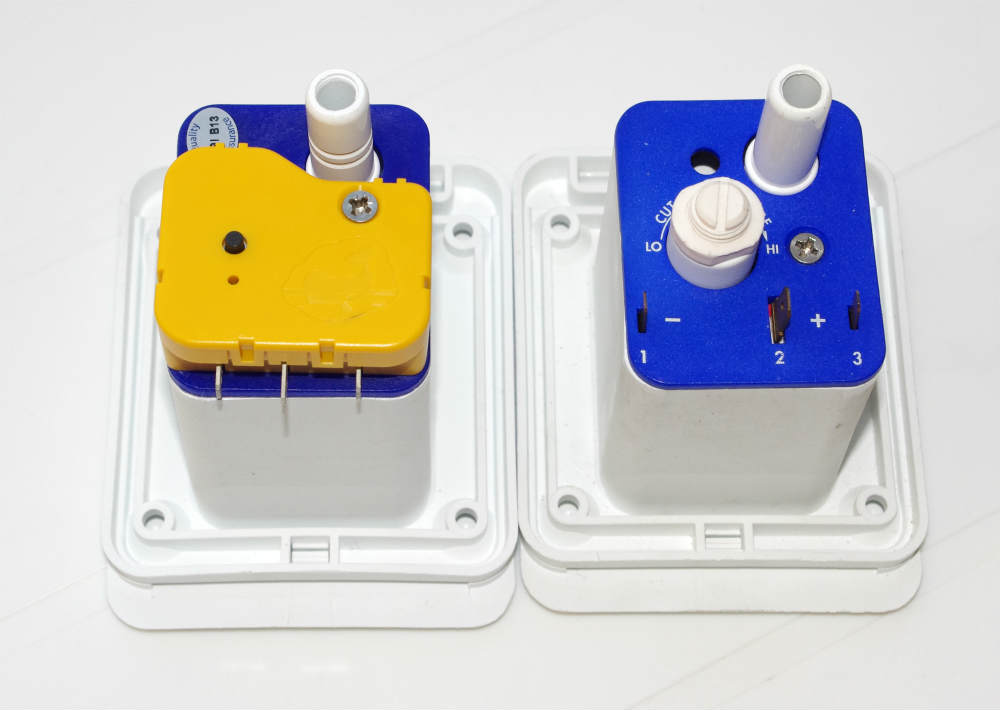
You will find the Whale Watermaster IC on all Explorer Group caravans from the 2013 model year. It is also available via caravan accessory shops and you can be easily retro-fit to any Whale inlet socket that has an inbuilt pressure switch.
Truma Ultraflow Smart Switch
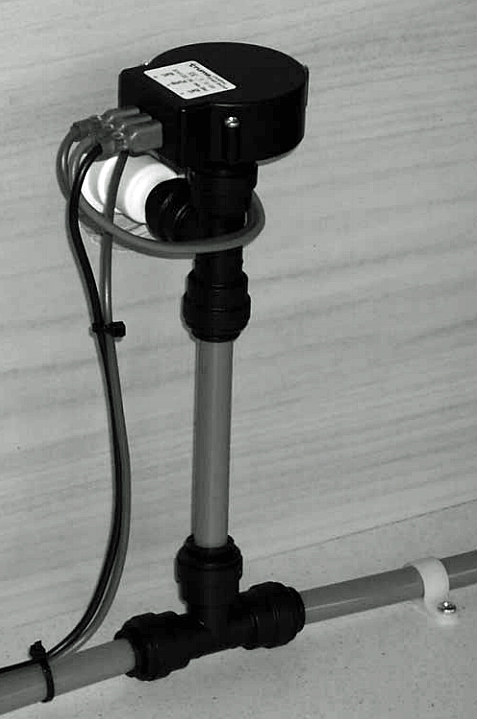
Truma's device employs an inline adaptive system to measure the performance of the submersible pump. The system uses information to adjust the start and stop pressures to suit the water pump and the prevailing battery voltage.
If the water container runs dry, the system stops the water pump after a short time. The pressure switch then locks out to prevent damage to the pump.
You will find the Ultraflow Smart Switch on some Bailey and Coachman caravan models from 2013.
Buying Your Perfect Caravan 2024
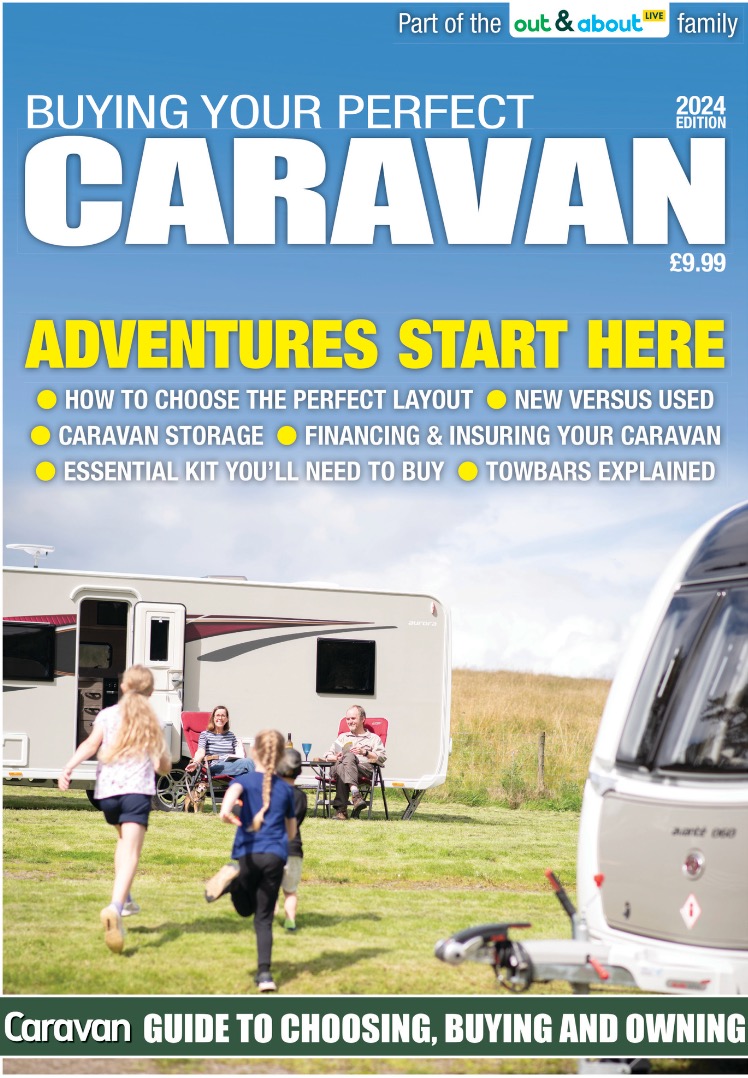
Looking for more great caravan buying information? You need the brand-new guide to Buying Your Perfect Caravan, it’s packed with everything you need to help you with choosing, buying, owning and enjoying your very first caravan.
Learn more about it here.
Digital edition
Download it now from Pocketmags for just £9.99
Print edition
Or order a printed edition for just £9.99 + P&P
Expert Caravan advice to your door!

Caravan magazine has been inspiring caravanners for more than 80 years! We have grown to become a leading authority on caravans, the caravan industry, caravan lifestyle, campsites and caravan travel destinations. We know what our readers want – and that's to make the most of their caravans and their holidays!
Want to know more about Caravan magazine?
About Caravan magazine







Recent Updates
Caravan showers: all you need to know
In this guide, we’ll discuss the different types of showers, how they work, and how to fit an external shower point to your caravan ...
Caravan towing: all you need to know
Towing a caravan may seem daunting initially, but a few simple tips can make the journey enjoyable and ...
All you need to know about towbars & towballs
Flange, detachable, swan neck, retractable – towbar technology choice is bewildering. Don’t worry. We’ll ...
Caravan WiFi: everything you need to know
Caravan holidays are the ultimate way of getting away from it all, although we sometimes need a link to the ...
Caravan insurance: all you need to know
Navigating the world of caravan insurance can feel like a daunting task. Fear not, as this comprehensive ...
Buying a caravan: what you need to know
Let us guide you through some of the complicated things to think about when first looking at buying a ...
Caravan awnings: a buyers' guide
Caravan awnings are a fantastic addition to any caravan as they are one of the simplest, quickest and most ...
Caravan electrics: avoid tripping out
All caravan owners have overloaded their mains supply at some time. Here’s how to master caravan electrics ...
Caravan heating systems: a quick guide to caravanning warmth
When winter is here, you’ll be glad of a decent caravan heating system if you’re out touring. Here’s how the ...
Caravan damp: a complete guide
There's little more guaranteed to strike fear into the heart of a caravan owner than the word 'damp'. But if ...
Other Articles
Caravan jockey wheels: the definitive guide
A well-functioning caravan jockey wheel can make all the difference to manoeuvring away from the towcar, especially if you don't have a caravan mover ...
Caravan cooking recipes
Caravan cookery inspirational ideas. No need to stress out in the kitchen with these quick and easy ...
Caravan bike racks: a complete guide
Exploring the beautiful surroundings while on a caravan trip is undeniably one of the greatest joys of the ...
A guide to solar power in your caravan
Not that many years ago, mains electrical hook-up on campsites was considered a bit of a luxury, and, for ...
The ultimate guide to caravan layouts
Choosing the right layout or floorplan of your caravan is an all-important part of the buying process – find ...
A guide to seasonal caravan pitches
Our in-depth guide to finding and securing seasonal caravan pitches on your favourite campsite ...
Caravan weights and payloads: a quick guide
The terminology of caravan weight – MIRO, MTPLM, noseweight, kerbweight, payload, weight plate upgrade – is ...
The ultimate guide to caravan motor movers
Caravan motor movers: everything you need to know about remote control caravan manoeuvring ...
Caravan cleaning: All you need to know
Whether you’re taking the caravan out for the first time or it’s just in need of a spruce up, our guide will ...
18 essential items for camping with your dog
Camping is for the whole family – including our four-legged members. Here's what you'll need to keep your dog ...